About this project
Overview of the edition
This project offers a preliminary digital edition of the longest astronomical text written in fifteenth-century Europe. Previously unpublished and extant in a single, autograph manuscript, Regiomontanus’s Defensio Theonis contra Trapezuntium or Defense of Theon against George of Trebizond offers a polemically charged survey of the astronomical and natural philosophical worlds of Ptolemy’s Almagest one generation before Copernicus would begin to reconfigure those worlds.
The digital edition includes facsimile images of all 302 folios of the manuscript (Kremer) and a transcription of the complete text, including all legible cancellations, insertions and revisions (Shank). The text can also be read in a normalized transcription, presenting our current best estimate of the final form for which Regiomontanus intended for his text. The transcribed text is fully searchable. Some brief notes clarify details of the transcription; notes discussing content will be added in the future. Since the PDF file of the transcription is 953 pages in length, “perfect” in this case would surely have been the enemy of “good.” We thus give a transcription in various states of completion. Some passages have been carefully proofread several times, others less so. We hope that users of the transcription will flag errors of transcription, inadvertent or otherwise, so that we may check and correct them. Please email us your corrections (mhshank@wisc.edu or richard.l.kremer@dartmouth.edu). This edition also includes a study of Regiomontanus’s paper and of the provenance of the manuscript (Kremer).
The Defensio often reads like a compendium of notes rather than a polished text ready for printing. We have divided the text into thirteen chapters, corresponding to the 13 books of Ptolemy’s Almagest and the organization of George of Trebizond’s commentary on that work. For Regiomontanus’s introduction, see ff. 37r-39r; for his quotation of George’s dedication to King Matthias of Hungary, see ff. 301r-2r; for a copy of the latter in another hand, see ff. 40r-v.
Context for Regiomontanus’s composition of the Defensio[1]
The Defensio culminates what was undoubtedly the longest and most acrimonious controversy in fifteenth-century Latin astronomy. The feud opened in 1451 when George of Trebizond composed a massive Commentary on the Almagest (ca. 300 manuscript folios), which, like the Defensio, remains in manuscript, unpublished and since the Defensio never carefully studied.[2]
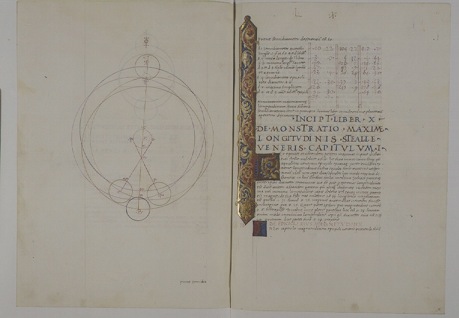
Fig. 1: George of Trebizond, Commentary on the Almagest, 1451, Bk. 10 on Venus. Biblioteca Apostolica Vaticana, Vat. Lat. 2058, ff. 170v-71r. © 2011 Biblioteca Apostolica Vaticana
As a youth, George of Trebizond (1396-1472) left Crete for Italy, where he became a teacher of rhetoric and a translator of Greek works for the papal court of Nicholas V. His many interests included astronomy and astrology. Between March and December 1451, George translated Ptolemy’s Almagest into Latin and completed an extensive commentary on it. He dedicated both the translation and commentary to Pope Nicholas V, adding perfunctorily that the pope might wish to have someone check the commentary. To George's eventual dismay, the pope followed his suggestion. Jacobus Cremonensis, an Augustinian friar who had translated Archimedes, gave the commentary a scathing review, returning the manuscript to George bristling with slips of paper filled with corrections and critical remarks. Loosing the pope’s patronage, George subsequently dedicated his translation and commentary first to a Venetian patrician, then to King Matthias Corvinus of Hungary, and finally to Mehmed II, Sultan of the Ottoman Empire and conqueror of Constantinople in 1453.[3]
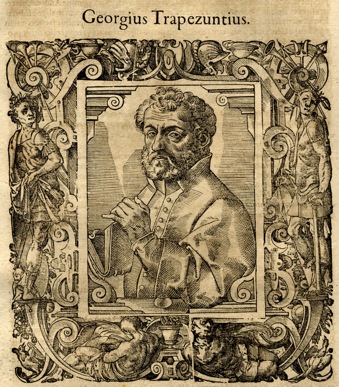
Fig. 2: George of Trebizond. Paolo Giovio, Elogia virorum literis illustrium (Basle: Petrus Perna, 1577), 31.
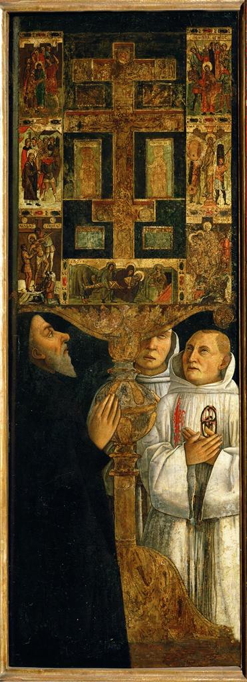
Fig. 3: Cardinal Bessarion and his reliquary. Gentile Bellini, c. 1472. © National Gallery, London / Art Resource, New York. The painting was commissioned by the Venetian Scuola della Carità after Bessarion had donated his Byzantine reliquary, containing fragments of the true cross, to the confraternity. Born in 1427, considered during his lifetime to be the greatest painter in Venice, and active in East-West cultural exchange, Bellini may well have known Bessarion personally.
George’s commentary drew more sustained criticism from Cardinal Bessarion (c. 1395-1472), who would eventually bring Regiomontanus into the fray, with momentous consequences for the history of astronomy. Born an orthodox Christian in Trebizond on the Black Sea, Bessarion had been educated both in Constantinople and under George Gemistos Plethon at Mistra, receiving broad exposure to the Greek mathematical sciences and philosophy. As an important church official, he traveled in 1438 to the Council of Ferrara/Florence, where he played a decisive role in the proposed reunification of Latin and Greek Christendom. Although this venture collapsed, the pope made Bessarion a Cardinal of the Western Church. Bessarion nevertheless kept a foot in both the Greek and Latin worlds, becoming patriarch of Constantinople in exile a decade after the fall of that city to the Ottoman Turks. Bessarion's attempts to save the Greek intellectual heritage from destruction led him to assemble the largest library of Greek works in Italy. Bessarion also gathered around himself a circle of scholars drawn to him in part by his library. One of its members, Niccoli Perotti, also wrote a Refutation of the inanities of George of Trebizond, which touched upon astronomical issues while addressing another long-standing dispute between George and Bessarion over Plato. On the political front, Bessarion tirelessly advocated a crusade against the Turks. It was on such a crusade-mongering mission to Vienna in 1460-61 that Bessarion met Johannes Regiomontanus and his teacher Georg Peuerbach.[4]
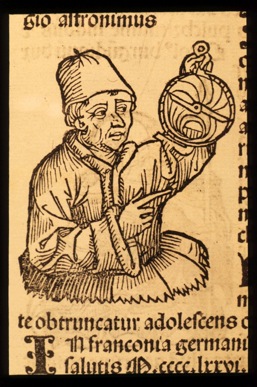
Fig. 4: Regiomontanus. Hartmann Schedel, Liber chronicarum (Nuremberg: Koberger, 1493), f. cclvi recto. Schedel and his artist, Michael Wolgemut, both knew Regiomontanus personally; this is the earliest known portrait of the astronomer. See Zinner, Regiomontanus, 267-68.
Regiomontanus's association with Bessarion would prove decisive for his career. As a twelve-year-old Regiomontanus (1436-76) had attended the University of Leipzig, where he computed daily planetary positions. In 1450, at the age of fourteen, he moved to Vienna and eventually developed a close relationship with Georg Peuerbach(1423-61), astronomer, court astrologer, and master of arts at the University of Vienna. Peuerbach and Regiomontanus collaborated on a number of astronomical/astrological projects; they made astronomical observations and compared them against predictions of the prevailing Alfonsine tables based on Ptolemaic theory. The most important theoretical result of their collaboration was the Epitome of the Almagest. Bessarion urged them to write this work because he had judged George's 1451 Commentary on the Almagest to be badly flawed. After Peuerbach died prematurely in 1461, Regiomontanus accompanied Bessarion back to Italy, where he perfected his Greek, lectured at the University of Padua, and completed the Epitome. Regiomontanus remained in Italy until 1465, reappearing in Hungary in 1467 and by 1471 moving to Nuremberg. During the years in Italy, Regiomontanus began writing the Defensio, his longest expository work that he probably did not complete until after moving to Nuremberg in 1471.[5] Regiomontanus’s premature death prevented him from carrying out his intention to publish the Defensio. The unpublished manuscript remained in Nuremberg where it must have attracted considerable attention; already by 1484 an unsubstantiated rumor arose that George of Trebizond’s sons had poisoned Regiomontanus in Rome.[6]
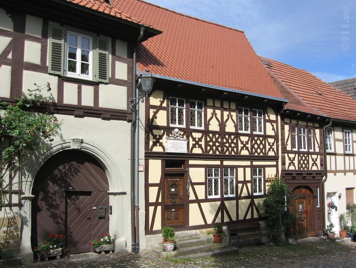
Fig. 5: Regiomontanus’s birth house, Königsberg in Bayern. Kremer photo, 1990.
The Defensio thus was born in public controversy, as can also be surmised from its often polemical tone of scurrilous, even scatological ridicule and disdain. In his Commentary, George had criticized and, according to Regiomontanus, also plagiarized an earlier commentary on the Almagest by Theon of Alexandria (fl. 360).[7] Regiomontanus framed his attack on George as a defense of Theon, although Regiomontanus’s text goes far beyond Theon and deals with a wide set of topics, ranging from methods of mathematical modeling and computation to physical astronomy and natural philosophy. Unlike the Epitome, which provides a focused, systematic, mathematical exposition of the 13 books of the Almagest, Regiomontanus’s Defensio is not organized into clearly delineated books or sections. It sprinkles quotations from George’s Commentary between geometrical demonstrations and ad hominem outbursts. My goal, wrote Regiomontanus, is not to “teach the rudiments of this art ... but to protect the integrity of those who philosophize honorably and to restrain the slanderous tongue of this story-teller [i.e., George of Trebizond].”[8]
For a general background to the astronomical and natural philosophical issues of Regiomontanus’s text, see Pedersen 1974, Grant 1994, and Evans 1998. More detailed studies can be found in the Bibliography.
Acknowledgements
More than ten years in the making, this Project has benefited enormously from the assistance of many institutions and individuals. We warmly thank:
The Institute for Research in the Humanities at the University of Wisconsin-Madison, which supported most of Shank’s transcription of the manuscript from 2000-4
The St. Petersburg Branch of the Archives of the Russian Academy of Sciences and its directors and staff, who authorized and produced digital scans of the entire manuscript
The Dartmouth College Library’s Digital Publishing Initiative for hosting the edition and developing the technological and management team.
Dartmouth College's Digital Library Technologies Group staff for developing the specialized mark-up, tagging the text, and creating the electronic database for presenting the scans and transcriptions
Academic Computing at Dartmouth College, for designing the web site for the edition
The Stadtarchiv Nuremberg, Stadtbibliothek Nuremberg, Germanisches Nationalmuseum in Nuremberg, Österreichische Nationalbibliothek in Vienna, Bayerische Staatsbibliothek in Munich, Universitätsbibliothek Erlangen, Universitätsbibliothek Basel, Biblioteca Nazionale Marciana in Venice, Stiftsbibliothek Heiligenkreuz and the Stiftsbibliothek Seitenstetten for allowing us to conduct codicological studies of their manuscripts containing Regiomontanus autographs
The National Science Foundation and the International Research and Exchanges Board (IREX) for their financial support
And for their generous help, we especially thank Daniel A. Alexandrov, Barbara DeFelice, Ryszard Dyga, Falk Eisermann, Alexander Eliseyev, Owen Gingerich, Lenore Grenoble, Menso Folkerts, Bertold Haller von Hallerstein, Natalia Karpova, David King, Barbara Knauff, Paul Merchant, Jr., Mark Mounts, Ingeborg Neske, Francis X. Oscadal, and William Ryan. We also thank those visitors to the website who have contacted us with corrections, comments and questions.
| Richard L. Kremer Dartmouth College |
Michael H. Shank University of Wisconsin-Madison |
December 2009
[1] See especially Michael H. Shank, "Regiomontanus on Ptolemy, Physical Orbs, and Astronomical Fictionalism," Perspectives on Science 10 (2002): 179-207.
[2] Tycho Brahe once sought to publish George’s Commentary. See Wilhelm Norlind, "Georgius Trapezuntius och hans Almagest-kommentar," Nordisk Tidskrift för Bok-ich-Bibliothesväsen 53 (1966): 19-24. For brief excerpts and a discussion of the twelve extant manuscripts, see John Monfasani, ed., Collectanea Trapezuntiana: Texts, Documents, and Bibliographies of George of Trebizond (Binghamton, NY: Renaissance Society of America, 1984), 671-87.
[3] John Monfasani, George of Trebizond: A Biography and Study of his Rhetoric and Logic (Leiden: Brill, 1976); Monfasani, ed., Collectanea Trapezuntiana.
[4] Ludwig Mohler, Kardinal Bessarion als Theologe, Humanist und Staatsmann, 2 vols. (Paderborn: F. Schöning, 1923); Antonio Rigo, "Bessarione, Giovanni Regiomontano e i loro studi su Tolomeo a Venezia e Roma (1462-1464)," Studi Veneziani 21 (1991): 49-110; Giuseppe L. Coluccia, Basilio Bessarione: Lo spirito grece e l'occidente (Florence: Olschki, 2009).
[5] Already in 1460 while still in Vienna and possibly before meeting Bessarion, Regiomontanus had prepared an autograph copy of George’s translation of the Almagest (Nuremberg, Stadtbibliothek, Cent. V, 62). See Ingeborg Neske, Die Handschriften der Stadtbibliothek Nürnberg, Bd. V: Die lateinischen mittelalterlichen Handschriften, Varia, 13.-15. und 16-18. Jahrhundert (Wiesbaden: Harrossowitz Verlag, 1997).
[6] Ernst Zinner, Leben und Wirken des Joh. Müller von Königsberg genannt Regiomontanus, 2d rev. ed. (Osnabrück: Zeller, 1968).
[7] A. Rome, ed., Commentaries de Pappus et de Théon d'Alexandrie sur l'Almageste, 3 vols. (Vatican City: Biblioteca Apostolica Vaticana, 1931-43).
[8] Ff. 66r-v. Cf. Michael H. Shank, "Regiomontanus as a Physical Astronomer: Samplings from the Defence of Theon against George of Trebizond," Journal for the History of Astronomy 38 (2007): 325-49.
